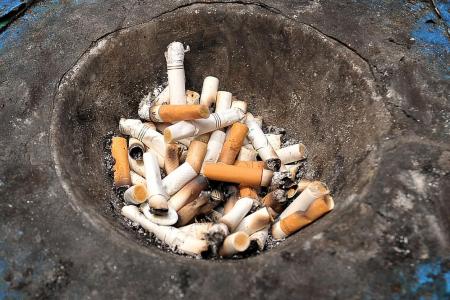Time to clear air on second-hand smoke
Smoking booths could create culture of responsible smoking and be a practical solution to protect non-smokers
According to the World Health Organisation, at least 60 cancer-causing chemicals have been identified in second-hand smoke.
Avoiding second-hand smoke outside of the home is still difficult as smoking remains permissible in many public areas.
Despite laudable measures by the Government to curb smoking in Singapore, their effectiveness remains to be seen.
Ineffective regulations
First, most measures attempt to stamp out smoking rather than acknowledge that it is persistent and that it needs to be dealt with downstream.
Look at the list of anti-smoking regulations such as hiking up excise taxes and banning the display of tobacco products in stores.
The legal age for smoking will also be progressively raised from 19 to 21 by 2021.
Second, when there are downstream efforts to tackle smoking, they are not adequate in containing second-hand smoke.
Yes, the list of non-smoking areas is expanding. Today, it includes parks, reservoirs, bus shelters and a 5m radius around them including covered linkways.
However, these measures do not protect non-smokers from second-hand smoke. As there are no barriers around designated smoking points, cigarette smoke easily drifts out of them and into surrounding areas, affecting passers-by.
Non-smoking zones suffer the same fate.
I chanced upon a more effective answer to this problem at a trade show in Indonesia two years ago.
More balanced solution
I walked into the exhibition hall and there it was - a large indoor glass cabin.
There was a group of people smoking inside, but when I walked around the outside of this smoking booth, I found there was no smell from cigarette smoke.
It turns out that such smoking rooms are being used outdoors in countries such as Dubai, Japan, Kuwait and Denmark, and they could be the more balanced solution Singapore needs for three reasons.
For one thing, it protects non-smokers by drawing an actual barrier between them and the smokers.
Some are equipped with filters to prevent the inside of the booths from getting too concentrated with smoke.
Second, having a contained place for smokers protects a building's environment as well.
Even when smokers smoke outdoors, many building owners have to contend with cigarette smoke getting into their buildings' air vents and air-conditioning system.
Estate management also have to regularly clear cigarette butts at the unofficial smoking points outside their buildings.
Lastly, smoking booths provide a more civilised way to separate smokers as compared to forcing them into yellow boxes.
However, the entire ecosystem has to work together, from smokers to non-smokers, building owners to the authorities, for this solution to have the opportunity to be more broadly tested across Singapore.
Relevant ministries that oversee different aspects of this social problem would need to work with their respective agencies to review the bureaucratic hurdles.
With the right collaborations, Singapore can potentially have a more balanced approach to driving down smoking rates, and not make smokers feel like social pariahs, and also better protect non-smokers and building owners from harmful second-hand smoke.
The writer is the director of Smoking Cabin SG, which set up Singapore's first smoking cabin in Fusionopolis earlier this year.
Get The New Paper on your phone with the free TNP app. Download from the Apple App Store or Google Play Store now


